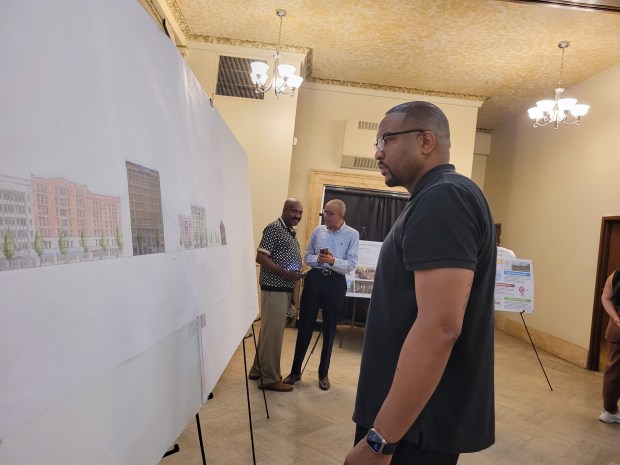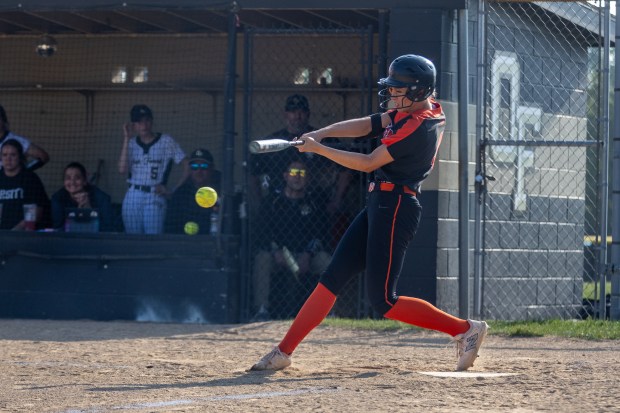Gary residents got their first taste of how the city intends to embrace the future without forgetting its heritage on Friday.
A downtown area that mixes the city’s architecture with walkability and a robust nightlife are the marching orders of some 200 residents who took part in the city’s charette — meetings where conflicts and potential solutions are hashed out — with the University of Notre Dame’s Housing & Restoration Initiative the week of August 5, said its director Marianne Cusato to at least 60 people in the Centier Bank lobby Friday evening during a presentation outlining the findings. They also want their access to the lakeshore restored, she said.
Residents don’t want a carbon copy of what the city once was, Cusato said, nor do they want something completely modern. They do, however, want Gary’s history and accomplishments front and center for the world to see.
The area that the program has targeted goes from 4th Avenue to 19th Avenue along Broadway and will then extend into the neighborhoods bordered by Pierce on the west side and Tennessee on the east, Cusato said. Her team, which comprises Notre Dame faculty, industry professionals and interns, has singled out churches in that area as the “heart and soul of recovery” and would start their focus there.
The north side of the area would see a museum devoted to Gary’s “Great Migration,” when thousands of African-Americans came from the South to find work at U.S. Steel Gary Works, and a “Walk of Fame” celebrating the city’s most noted children would start from the Palace Theater and head north, Cusato said. Buildings, instead of immediately getting torn down, would be evaluated, and if they can be saved, they wouldn’t be demolished; in fact, the team recommended that the $12 million in blight money earmarked for the city in S.B. 434 should go to remediation instead of demolition, she said.
For those buildings whose bones are still good, the team recommends installing fabric likenesses of their facades streetside so people can see the buildings in a less-dilapidated light. While not a new intervention — former Gary Mayor Thomas Barnes tried something similar when he had painted plywood installed on buildings along Broadway in the late 1980s, a panel of which is still on the front of the Palace Theater today — using fabric likenesses is a solution used in Chicago, Paris, Bilbao, Spain and other points all over the world, she said.
“It buys you time,” Cusato said.
In a similar vein, vinyl panels could be installed over the Genesis Center, and either artists could create on them or the city could project artists’ work on them, she said.
Even the venerated but long-neglected City Methodist Church could play a part in the district, Cusato said. Architects on the team are “reasonably sure” the church’s tower could be saved, and the space around it could be turned into a so-called renaissance park.
“Unfortunately, (City Methodist) is the image most people have of Gary, but we can change the narrative by activating the alley. That will be a pilgrimage site for sure,” she said.
Miranda Cuozzo, a graduate student team member, added that the concept of water could be incorporated into architecture going forward.
“You have Lake Michigan, but what does water mean to African-Americans? For many, it could represent the Middle Passage,” she said.
For any of this to get started, however, the city itself has some housecleaning to do in the form of completely overhauling its zoning, Cusato said. That’s already happening, Mayor Eddie Melton said.
“We’ve brought in a specialist, and we’re going to see what we can get passed this year (in the downtown district),” he said. “Then we’ll start expanding it into the other areas of the city.”
The city has also hired a grant writer to tap into resources, which now that the city has a plan, should be easier to get, Redevelopment Director Chirs Harris said. Another project on which Notre Dame worked in Kalamazoo, Michigan has been able to get $98 million because of its plan, he said.
Joslyn Kelly, whose J’s Breakfast Club, at 2601 Broadway, falls outside the new district, said she’s “cautiously optimistic” about the new plan. In Gary’s current climate, it took her five years — from soup to nuts — to open.
“I’m excited and want to be supportive, and as a business owner, it’s important to have positive economic development,” Kelly said. “But I’ve made this investment, so I have questions since where I am, I’m really the other gateway into the city.”
Michelle L. Quinn is a freelance reporter for the Post-Tribune.





